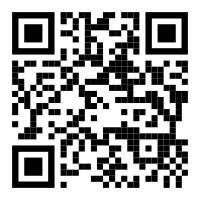What kind of therapy is right for you?
The best type of therapy is the one that fits your mental health needs as well as your goals and personality. Get the guidance you need here.

Choosing a therapist from a long list of in-network providers can be daunting. After all, there are so many types of practitioners. If you don’t understand the approaches they use, how can you decide which kind of therapy is right for you?
“Most people don’t know the differences between various therapies and why it matters,” says psychologist C. Vaile Wright, PhD. Wright is senior director of healthcare innovation at the American Psychological Association in Washington, D.C. Plus, the treatment model is only one part of the puzzle, Wright says. “At the end of the day, the relationship between the therapist and the client sets the stage for whether any of these approaches work.”
Still, before you can decide whether you and a therapist are in sync, you need to pick a therapy path. To help you get started, here are the basics of 5 common types of therapy.
Cognitive Behavioral Therapy (CBT)
What is it? CBT is probably the most common type of therapy right now. It helps identify — and change — negative thinking that drives psychological problems. You’ll also work on replacing negative behaviors with more positive ones.
Say you’re struggling with anger. First, your therapist would help you spot what sets off your anger. Then they’d teach you how to walk away from those triggers instead of blowing up.
What should I expect? You and your therapist will talk about what’s happening in your life. You’ll be asked to think about how your beliefs and thoughts affect your feelings and behavior. You’ll also talk about ways to restructure your thoughts to help you feel better and take charge of situations.
Outside of your sessions, you may have homework. Your therapist might ask you to practice replacing negative or distorted thoughts with more positive and realistic ones. Or you may write down examples of your unhelpful thinking in a journal. CBT is all about giving you the coping skills to learn how to change your thinking and behavior patterns on your own.What is it best for? CBT helps with a wide variety of mental health conditions. On the list:
- Depression and anxiety.
- Bipolar disorder.
- Eating disorders.
- Substance abuse.
- Anger management issues.
- Post-traumatic stress disorder (PTSD).
Acceptance and Commitment Therapy (ACT)
What is it? ACT combines strategies that address behavior, acceptance, and mindfulness. Mindfulness is the practice of paying attention to the here and now without passing judgment on what’s happening in the moment. ACT uses mindfulness techniques to help you accept things that you can’t control. It also helps you commit to making behavior changes that match your personal values. And it emphasizes flexibility.
“Acceptance-based interventions seek to change one’s relationship to unwanted thoughts, feelings, and behaviors, as opposed to trying to change or control them,” explains Carol Landau, PhD. Landau is a clinical professor of psychiatry and human behavior and medicine at the Alpert Medical School at Brown University.
What should I expect? Your therapist will help you learn mindfulness techniques. Some examples:
- Sitting quietly for a few minutes and noticing any emotions that arise. Then letting those emotions pass without dwelling on or judging them.
- Doing a 5-senses practice. Here, you bring your attention to what you see, hear, feel, smell, and taste. The goal is to learn how to stay in the moment. This helps keep you from getting caught up in thoughts that hold you back from your goals.
Using these techniques, your therapist will help you identify values that are important to you. They’ll also help you set goals that are in line with your values.
What is it best for? ACT is helpful for several psychological issues, including:
- Anxiety and depression.
- Stress.
- Substance abuse.
- Obsessive-compulsive disorder.
- Weight management and body image issues.
Dialectical Behavior Therapy (DBT)
What is it? A relative of CBT, DBT focuses on two key strategies: acceptance and change. For instance, you can learn to accept who you are. But at the same time, you can see that you need to change to reach your goals. If acceptance and change seem to be opposites, in some ways they are. In fact, “dialectical” means an integration of opposites.
DBT teaches 4 key skills and strategies, says Wright. Two focus on acceptance:
- Mindfulness skills.
- Better ways to handle distress (without acting on it).
And 2 focus on change:
- Better ways to balance emotions.
- Healthier ways of interacting with people.
“It’s a comprehensive approach that helps people develop coping skills, assertiveness skills, and skills to manage distress and negative emotions,” Wright explains.
What should I expect? DBT includes both a skills training group and individual therapy. The skills training group has a classroom feel. The therapist teaches key skills and assigns homework for practicing them. Groups typically meet once a week for 24 or 48 weeks.
Individual therapy happens over the same period as the skills training group. During weekly 1-hour sessions, you’ll work with your therapist on using the skills you’re learning in class in your day-to-day life.
What is it best for? DBT was first developed to treat borderline personality disorder. People with this condition have difficulty managing emotions, and their relationships are often unstable. It can include suicidal thoughts. “DBT can be especially powerful for people who struggle with impulse control,” Landau says. It’s also used for:
- Addiction.
- Depression.
- Attention deficit hyperactivity disorder (ADHD).
- Self-harm.
- Eating disorders.
- PTSD.
Mindfulness-Based Cognitive Therapy (MBCT)
What is it? This therapy combines cognitive behavioral techniques with mindfulness strategies like meditation and breathing exercises. It helps people see themselves as separate from their thoughts and moods. Understanding this divide can help you break free from negative thought patterns. These patterns tend to play over and over in the mind and lead to an unhealthy mental state.
What should I expect? MBCT is typically an 8-week group therapy program. You’ll meet once a week for 2 hours and have practice between sessions. During that time, your therapist will teach you several cognitive therapy strategies. They will help you pay less attention to negative thoughts to develop more skillful alternatives. These include learning to replace the negative thoughts with more positive ones. This helps you steer clear of a downward spiral into, say, depression before it starts.
You’ll also learn mindfulness practices. They’ll help you stop the mental processes that play a role in low moods or depression. In between group sessions, you’ll typically have 45-minute homework assignments. You might listen to audio recordings and practice mindfulness meditation or breathing techniques.
What is it best for? MBCT was developed to help treat repeat depression. “I think it can be helpful for everybody,” Landau says. “We can all benefit from the foundation of paying attention to the moment, with purpose and a lack of judgment.” MBCT is often used to treat:
- Anxiety.
- Bipolar disorder.
- Eating disorders.
- Depression.
- Chronic pain.
Rational Emotive Behavior Therapy (REBT)
What is it? REBT laid the foundation for CBT. It’s based on the idea that external factors — such as a negative comment from your boss — don’t make you feel a certain way. Instead, it’s how you think about those things that make you feel depressed or anxious. And many of those thoughts are irrational. (For example, “I am a failure at work. No one will ever hire me again.”)
With REBT, you work on uncovering and labeling those irrational thoughts and feelings, Wright says. Then you learn how to replace them with positive, rational ones. Over time, breaking down your old patterns of negative thinking leads to a more positive outlook.
What should I expect? In these 1-on-1 sessions, your therapist will likely work you through the ABCs of REBT:
- A: Activating (or adverse) event. This is the situation that caused you to have a strong emotional response.
- B: Beliefs. These are your thoughts about the event, yourself, and the world. (Using our example, “I am a failure at work. No one will ever hire me again.”)
- C: Consequences. These are the emotions and perceptions produced by the activating event and beliefs.
Through this practice, your therapist will help you see the cause of your irrational thoughts. And they’ll help you form a plan for creating more rational thought patterns. Common techniques include:
- Positive affirmations.
- Journaling.
- Guided imagery.
- Meditation.
- Repeating positive mantras.
What is it best for? REBT is helpful for:
- Depression.
- Social anxiety.
- Antisocial behavior.
- Addiction issues.
- Low self-esteem.
Still not sure what kind of therapy is right for you? Talk to your primary care physician and ask if they can give you a referral.
